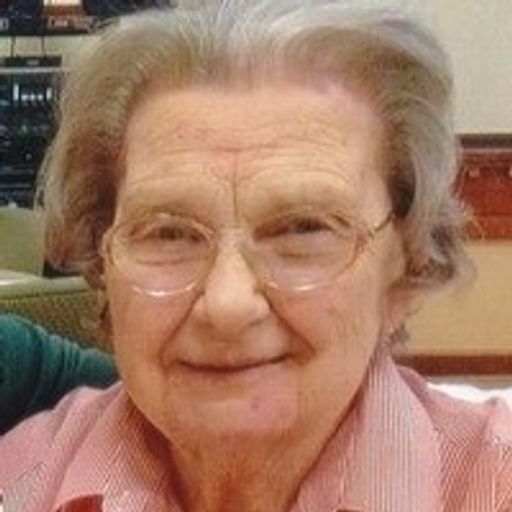

1926
Rigmor
2014
Rigmor Syversen Cuolahan
April 13, 1926 — February 7, 2014
In Remembrance: Rigmor Cuolahan April 13, 1926 - February 7, 2014 The license plate on her Honda Civic read simply, "Rigmor." Her son Erik called her "my hero." But Rigmor Cuolahan, a native Norwegian and a member of Nordkap Lodge since 1969, was so much more to so many people: As a strong-willed teenage girl when Germany invaded Norway in World War II, she was a staunch defender of her country. Along with other Norwegians, she pointedly turned her back on occupying German soldiers and, when refusing to sit with them, she was thrown off a train by a gun-wielding German officer. With her father, she hand-delivered secret messages for the Norwegian resistance. When neighboring Finland was invaded by Russia before the war, she attended rallies to gather food and clothing for Finland, and she knit mittens with holes for the trigger fingers for Finnish soldiers and resistance fighters. After the war, as an English-major graduate of the University of Oslo, she was executive secretary to the president of the famed Freia chocolate company, taking dictation in five languagesEnglish, Norwegian, Swedish, French, and German. Later as a young wife and mother in her adopted America, she began a half-century of volunteerism and leadership in local ethnic organizations that in 1996 won her the Spirit of Detroit Award from the Detroit City Council and induction into the International Institute Heritage Hall of Fame along with such Detroit giants as David DiChiera (founder of the Michigan Opera Theatre) and Peter Karmanos (founder of Compuware). Son Erik sums it up this way: "She was a mother, a humanitarian, and a saint." Born Rigmor Syversen in an expansive 200-year-old house overlooking the Oslofjord in Drbak, Norway, in 1926, she was the granddaughter of a Norwegian ship captain and the daughter of electrical engineer Rolf Emanuel Syversen, head of the electrical engineering department at Oslo's landmark City Hall, and his wife Ella. Rigmor didn't wait long, though, to establish her own credentials. At the age of 3, she began weekly studies in a children's craft workshop, learning knitting, embroidery, and weaving, and was soon recognized as a child prodigy. She continued with the workshopin addition to her regular schoolingfor five years, receiving a gold cross attendance award from the Queen of Norway for never missing a day at the school. Her technical mastery of needlework grew and continued for more than 80 years, producing some legendary results. During the war, when all commodities in Norway were scarce and imports were stopped, Rigmor repaired women's sheer stockings with hair from her own head. She made fine clothes out of a British parachute. Later, when a friend asked her to mend a sock with no heel and no toes that he had worn as a soldier, she repaired it so perfectly that he had it framed instead of wearing it. For her high school graduation, she made her own cap and jacket from a pair of her father's wool pants. With her aunts, she made the elaborate hand-embroidered Norwegian bunad she wore at 17th of May celebrations. And in America, for many years she sold her hand-knit items at bazaars, including dolls wearing Norwegian sweaters and matching hats, plus full-size Scandinavian hats and mittens for children and adults. As a young woman in Oslo, Rigmor relished the vibrant atmosphere of the capital city where her parents had moved the familynow including her younger brother, Hardonfrom their Drbak home on the fjord. They lived just a short walk from Frogner Park where she and her friends frequently encountered the artist Gustav Vigeland who worked there for more than 20 years, creating an amazing sculpture park. With her Scandinavian good looks reminiscent of Ingrid Bergman, Rigmor developed friends at the National Theatre and was a welcome guest at parties along Embassy Row. She had many boyfriends. But it was a shipboard romance with a tall, dark American with a degree in metallurgy who had been a nosegunner in a U.S. Navy Air Corps Liberator bomber that won her heart. She and Paul Cuolahan from Michigan met onboard a transatlantic ocean liner as Rigmor was returning to Oslo from visiting an uncle in Chicago. Their courtship continued for three years until Paul and Rigmor married in Lansing, Michigan, in 1953. The couple lived in a Livonia house for many years and later moved to a condominium in Northville. They had two sons, Erik and Tim, and eventually three grandchildren and three great grandchildren. But before her sons were born, Rigmor returned to work, serving as executive secretary at a Detroit lumber firm. Following the birth of her children, it was volunteerism, first learned from her parents in Norway, that took Rigmor's attention. She began by volunteering at her son's school, lecturing about the history and culture of Norway and showing its crafts. Soon, other schools were asking her to speak. Erik recalls her appearing at several schools in the Detroit area and one in Windsor, Ontarioall in the same day. Leadership in Detroit's ethnic community and the Detroit International Institute quickly followed. Rigmor served as board member of the International Institute and ran its gift shop. She was variously cultural director, social director, and vice president of Nordkap Lodge of the Sons of Norway. With her husband and son, she volunteered for many years at the Scandinavian Festivals on Detroit's riverfront. She was president of the Danish Sisterhood and was active in the Senior Danes, Finnish Center Association, Swedish Club, and Cosmopolitan Women's Club. For 10 years in the mid-1970s to mid-1980s, she hosted "The Norwegian Hour" on Detroit's WMUZ-FM radio, then called "the station of the nations." She was also a newspaper correspondent for the former "Nordic News" in Detroit and "Nordic Times" in New York. At the Danish Club and later the Swedish Club, she led an elementary schoolchildren's group called Jada where she taught the crafts, songs, dances, and games of Scandinavia for many years. She also volunteered as an usher for the Scandinavian Symphony and the Fox Theater and had been a member of the Northville Women's Club and the Red Hat Society. But with all these activities, Rigmor still put her family first. "She cooked every meal," Erik says, remembering lots of "torsk" (cod fish and salmon) at their table and the salmon mousse she made in the shape of a fish. And when Paul's health progressively declined with multiple sclerosis in later years, Rigmor was his devoted caregiver until his death in 1997. Rigmor passed away 17 years later on February 7, 2014. A memorial service in late April is tentatively planned, after which Erik hopes to take his mother's ashes home to Norway. --By Louise Giles Photo captions: #1 The 200-year-old wooden home overlooking the Oslofjord in Drbak, Norway, where Rigmor Syversen Cuolahan was born in 1926. (Photo courtesy of Erik Cuolahan) #2 Rigmor Cuolahan attended Nordkap Lodge's celebration of Norwegian Constitution Day in 2009 with her great-grandsons, Mason, center, and Gage, on the right. Rigmor made her hand-embroidered bunad dress with her aunts in Norway. The boys' Norwegian bunad costumes were also hand-made by Rigmor. (Photo by Bob Giles)
To order memorial trees or send flowers to the family in memory of Rigmor Syversen Cuolahan, please visit our flower store.
Guestbook
Visits: 0
This site is protected by reCAPTCHA and the
Google Privacy Policy and Terms of Service apply.
Service map data © OpenStreetMap contributors



